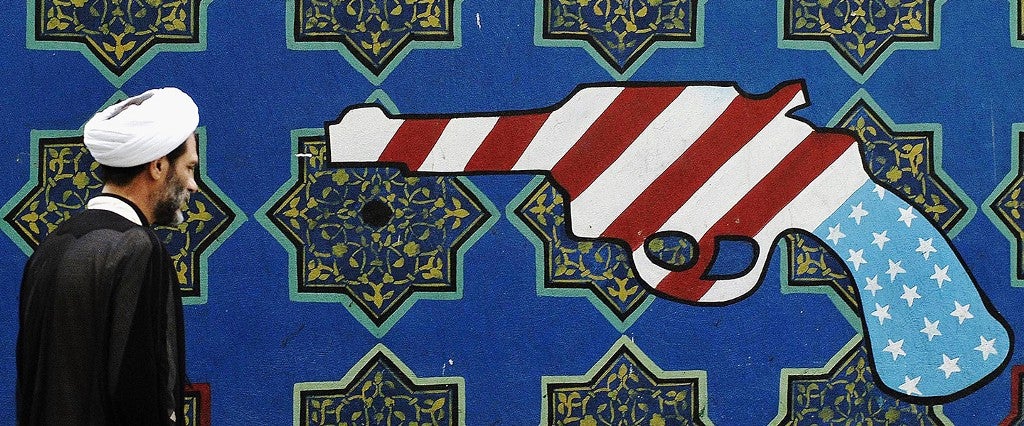In December 1978, at the height of the Iranian Revolution, Arezoo Shayan and her family boarded an Iran Air Boeing 747 from Tehran to Los Angeles — a 17-hour one-way flight that would drastically change the course of their lives. “I was 13 years old,” says Shayan. “It was chaos. I thought I’d be back in a few months when things settled down but we had no idea we’d never be able to go back.”
Shayan is one of many Persian-Americans who fled Iran in 1978 for fear of persecution — when the Shah of Iran was overthrown and replaced with an Islamic republic — and who now feel unnerved by the anti-elite, populist movement that delivered the election to Donald Trump.
“It’s a similar fear of the unknown. The hatred and targeting of minority groups is the same,” says Shayan, who like many Americans was surprised by the election of Trump.
In 1963, during what became known as “The White Revolution,” the Shah of Iran announced electoral changes to enfranchise women and allow non-Muslims to hold office. But the reforms also created new social tensions, irking religious conservatives who felt the reforms infringed on their beliefs.
“Iran was a very religious country, and the hardliners felt that the Shah’s push towards westernization was a betrayal of Islam,” says Keyhaneh Dirinpour, who left Iran on January 18, 1979 — the day after the Shah left the country. Dirinpour sees parallels between “the way white America sees Obama’s presidency — as a betrayal to their place in the country” and the way the mullahs in Iran felt the Shah’s reforms were undermining their power.
The political climate in the U.S. is not very similar to the one that unleashed the Iranian Revolution. Donald Trump is, after all, a democratically elected president. But the similarities between his rhetoric and that of Ruhollah Khomeini, the religious leader who seized power by appealing to the working class, have left some Persian-Americans feeling anxious.
“Trump speaks with a language that is unorthodox to the political domain. Like Khomeini, he uses the same unsophisticated language that everyone could understand. It’s loyal to the people on the street,” says Khosrow Kermani, whose family left Iran in 1984.
The same could be said about any number of 20th-century revolutionary leaders who spoke directly to the plight of working-class people — the Cubans with Fidel Castro and the Bolsheviks with Karl Marx and Vladimir Lenin — but the thing that distinguishes the Iranian Revolution and 2016’s populist movement in the U.S. is the idea that minorities and foreign influences are responsible for the woes of working-class people.
In his book on theocratic rule, Islamic Government: Government of the Jurist, Khomeini writes, “Hundreds of millions of Muslims are hungry and deprived of all form of health care and education, while minorities comprised of the wealthy and powerful live a life of indulgence, licentiousness, and corruption.”
Like Trump, Khomeini was a political outsider who had previously never held public office—which gave some credibility to his charge against the establishment. He expertly channeled populist anger against Baha’is, Jews, Kurds and other minorities by promising to put an end to things like political corruption and humiliating debt to foreign powers, class division and poverty and cultural pollution of foreigners.
“It was a mindless rebellion,” says Farzaneh, who grew up in a politically active family and who left Iran in 1972, though he continued to visit for years afterward. “The poor religious Iranians supporting Khomeini didn’t really understand politics and economic policy. They were motivated by their anger against foreign influence and the preservation of their livelihood.”
Sound familiar?
“The demonstrations during the lead-up to the Iranian revolution were very similar to Trump’s rallies — violent and angry,” says Dirinpour. “It was a reaction against everything that represented the elite.”
Much in the same way that Trump’s rise to prominence was drawn out from a fever dream of anti-establishment rallies and xenophobic demonstrations at a time when the U.S. was enjoying economic growth (albeit distributed unevenly), the revolution in Iran was unusual in that it lacked many of the customary causes of a political insurgency (defeat at war, a financial crisis, peasant rebellion, or disgruntled military). Instead, Khomeini stoked the fears of poor and working-class people by invoking foreign influence.
“Our country is being turned into a market for expensive, unnecessary goods by the representatives of foreign companies, which makes it possible for foreign capitalists and their local agents to pocket the people’s money,” he wrote while in exile in 1970.
Still, Dirinpour says, “life under the Shah wasn’t perfect by any measure.” But looking back, she thinks that “most Iranians would say that for a moment, everyone had lost their minds.”
Once the regime took power, Khomeini instituted a “revolutionary crisis mode,” and quickly abandoned his promises for greater political transparency, more jobs and less reliance on foreign imports. In a grab to consolidate his influence in the country, he carried out executions, imprisoned foreign journalists accused of spying, took foreign civilians hostage and shut down several dozen newspapers and magazines that opposed the new regime.
“Six, seven months after the revolution in Iran, people realized that the reality was not what had been promised to them,” says Kermani. “The mullahs eliminated one minority at a time; inflation grew rampant. And gradually they closed the circle until the only people left in power were the hardliners.”
“We went back in time,” says Dirinpour. “Women were forced to wear hijabs and people who were considered to be a threat to the regime were executed.”
But, Kermani says, “the most vital difference between the situation in the U.S.and Iran is the people in America have free press and NGOs. Their absence is what allowed Khomeini and his party to do whatever they wanted.”

